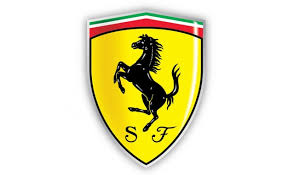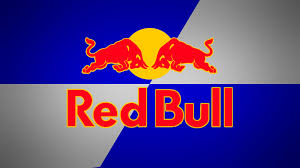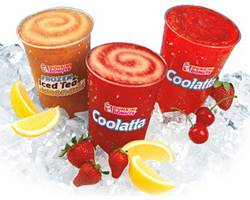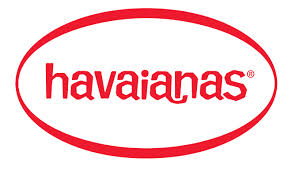Ferrari and Lamborghini are famous in the world, but how many of you know about that Ferrari is one of the brands built by Fiat Chrysler Automobiles and Lamborghini is belong to Volkswagen Group. Some people may say that Ferrari from which company is no important, but we must know that products and services from the same company will have the same core value and quality.
Brand is able to let consumer to identify the company ownership or be a status symbols of product. Take Toyota Motor Corporation as an example, Toyota Motor Corporation is a famous Japanese automobile company.
It is a successful  vehicle manufacturer in the world that supplies more than 170 countries. Toyota had established since 1937 and there are few brands under Toyota, such as Scion, Lexus, Daihatsu and Hino.
vehicle manufacturer in the world that supplies more than 170 countries. Toyota had established since 1937 and there are few brands under Toyota, such as Scion, Lexus, Daihatsu and Hino.
Lexus is a luxury car brand built by Toyota to compete in the American market. Lexus is set up by the research of American luxury- product consumer habit and lifestyles. From article that shared by CBS Money Watch about Toyota and Lexus, it shows that the brand of Lexus had resulted the Toyota brand decrease for 15% over the few months, while Lexus brand is increase for 5 %. It shows that brand able to change the view and decision making of customers.
Scion is a company younger than Lexus in the American market. It is a new brand to target the young generation. Scion is mean “descendant of” from an old French word of Germanic origin. Scion with the young generation meaning to attracted more consumer. Besides that, Scion had design the vehicle with crazy paint job and bold designs that more close to young generation’s thinking. Then, Scion had also roll out a limit amount of limited edition vehicle with limited accessories. The limited accessories include subwoofers, decals, canvas roofs and even a supercharger on some models.
Toyota used different names to sell in the different countries. A brand name is importance to a company to be globalization, so the name of the brand is better to convey brand information. In different countries, the same word will have different meaning, so the company needs to have marketing research in targeted country. Other than brand name, the logo, colour and font is important to a new brand, Brand have it own personality, it able to provide consumers holistic perception and specific information. For example, Nike is famous with “tick” logo.
Toyota using the advantages of Global brands to create new brands, because different brands different price. Although Toyota and Lexus are two different brands, but they still in a same company and their vehicle may have the same engine, same body type and similar exterior and interior design. If want to compare their different, it maybe some different in gadget or accessory, such as grill, light and ignition key. For example, 2014 Toyota highlander vs. 2014 Lexus RX and 2014 Toyota Avalon vs. 2014 Lexus ES.
Other automotive companies also built their own luxury brand vehicle too. For Instance, Cadillac General Motors got Cadillac, Ford Motor Company got Mercury, Nissan got Infiniti, and Honda got Acura. So, is it worth for us to spent more money to pick a brand?
To compare Toyota and Lexus by using brand association network, maybe we may have the brand association connections that Lexus is luxury car, performance, engine is quiet compare to Toyota, better design, name of Lexus sound better and Toyota is Japanese company, quality, value, fuel economy.
From brand association network, we able to find out the power of brand is strong. If compare between Toyota and Lexus, it may have many similar point. So, let us compare the famous brands Ferrari and Lamborghini!
(Just have to list down the first perception when you see the logo.)
Reference:
Adam Fisher, 2010, Toyota and Lexus: A Tale of Twin Brands, CBS Interactive Inc., retrieved 31 Aug 2015, <http://www.cbsnews.com/news/toyota-and-lexus-a-tale-of-twin-brands/>
Consumerreports.org, 2014, 2014 Car-Brand Perception Survey, Consumer Reports, retrieved 31 Aug 2015, <http://www.consumerreports.org/cro/2014/02/2014-car-brand-perception-survey/index.htm>
Lone Wolffe, 2013, Japanese Car Shopping- Toyota, Lexus, and Scion, auto-era.net, retrieved 31 Aug 2015, <http://auto-era.net/buying-a-car/japanese-car-shopping-toyota-lexus-and-scion/>




 When certain brands first appear in the market, they might be lucky and establish a personality. But what does that luck depend on?
When certain brands first appear in the market, they might be lucky and establish a personality. But what does that luck depend on?


 id a little sample survey in Deakin University and the following is the result. as observed, the repeated words are energy drink and wings, therefore a majority of the consumers related it to an energy drink and its famous punch line, it primary product benefit and punch line, which is the salience of the brand. It also shows massive brand awareness among consumers.
id a little sample survey in Deakin University and the following is the result. as observed, the repeated words are energy drink and wings, therefore a majority of the consumers related it to an energy drink and its famous punch line, it primary product benefit and punch line, which is the salience of the brand. It also shows massive brand awareness among consumers.




















